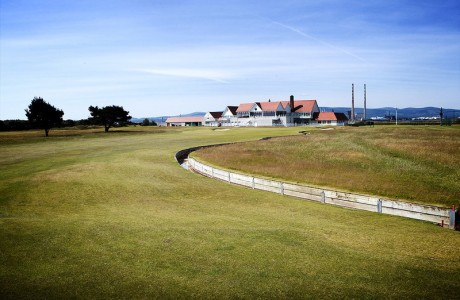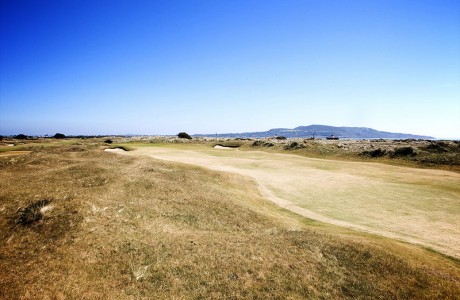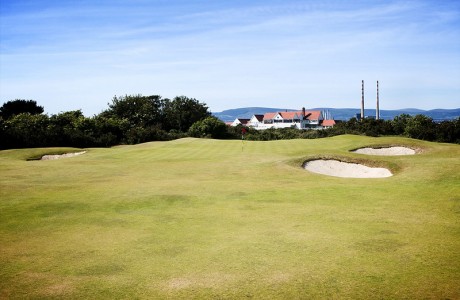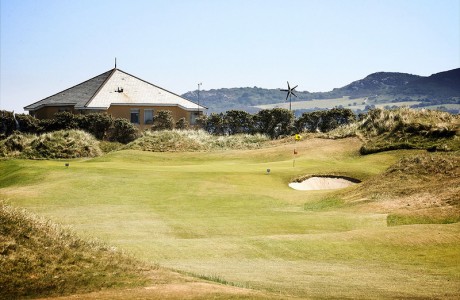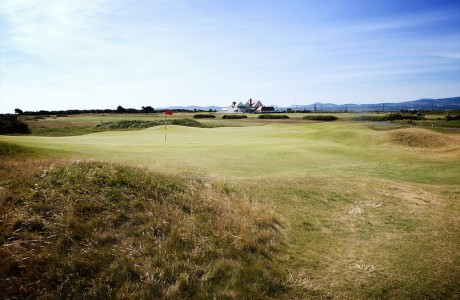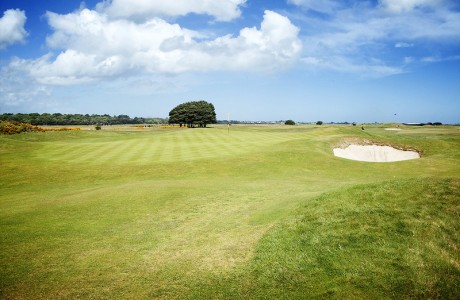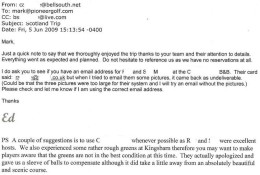| Founded: | 1885 |
| Designer: | Harry Colt, Martin Hawtree |
| Championship Length: | 7,268 yards |
| PAR: | 72 |
| Type: | Links |
Royal Dublin

Who this course is best for:
A golfer who would like play traditional links golf, would like to play the second oldest club in Ireland, would like to play a former Irish Open host.
Overview:
A definite inclusion in the list of great Irish links courses, Royal Dublin is Ireland’s second oldest golf club and possesses a history to match. A Scottish banker named John Lumsden pioneered the formation of the club and having been founded in 1885, the Dublin Golf Club as it was then known, was first based in the Phoenix Park but as membership grew, a new home was sought. Following a brief sojourn at Sutton, the club moved to its present home at Bull Island in 1889 and became known as the Royal Dublin Golf Club when it received its Royal designation in 1891.
The land of Bull Island would merit a footnote in history even without its association with a famous golf club. The terrain is not in fact an island but rather a sandbank, formed as a byproduct of maritime necessity. As the port of Dublin grew in the early 1800s, a certain Captain William Bligh, formerly of H.M.S Bounty, was involved in the construction of a sea wall in order to provide shipping with a safe approach to Dublin Port. The “Bull Wall” was completed in 1823 and the resulting sandbank known as Bull Island continues to grow today. Royal Dublin was sequestered for military use during the First World War and while this was an inconvenience for golf, it also proved fortuitous. Such was the destruction to the terrain, the club was given £10,000 in compensation, and it was this money that allowed the employment of renowned architect H.S. Colt.
Renowned for its greens, having played the course prior to the 1998 Open Championship, Ernie Els insisted that they were “the best links greens I have played in a long time.” Different to most links courses, Royal Dublin is laid out almost entirely on flat land but still represents as formidable a links test as you are likely to encounter. The layout is in the traditional out and back format, so the two nines must be handled quite differently due to the prevailing winds. What can sometimes be a good score in the making is often quite literally blown off course during the return to the clubhouse.
As befits a course of Royal Dublin’s stature, it has played host to a wide range of major events over the years, both amateur and professional. The Irish Open was staged at Royal Dublin from 1983 to 1985, being won twice by Seve Ballesteros and by Bernard Langer in 1984. The club has hosted the Irish Amateur Open from 1998 to 2002 and was also the scene of one of the most remarkable finishes ever in the history of the game. During the 1966 Irish Open, Christy O’Connor, Sr. stood on the 16th tee of his home course needing three birdies to tie. O’Connor produced an eagle birdie eagle finish, a feat more difficult today as the 18th is now regarded as a par 4.
Course review content courtesy of Golf Publisher Syndications
Testimonials
“Just a quick note to say that we thoroughly enjoyed the trip thanks to your team and their attention to details. Everything went as expected and planned. Do not hesitate to reference us as we have no reservations at all.”
Read more testimonials »

